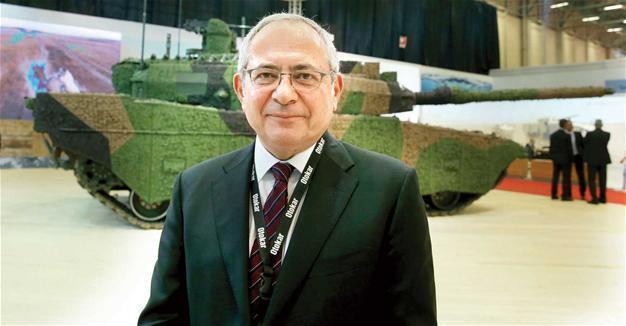Turkey’s indigenous main battle tank gets facelift after Euphrates Shield operation
Güneş Kömürcüler - ISTANBUL

An advanced and asymmetric version of Turkey’s indigenous main battle tank, the Altay, has been developed by Otokar to meet the changing needs and requirements of the Turkish Armed Forces based on experiences from the Euphrates Shield operation, Otokar’s chief has told the Hürriyet Daily News.
Otokar CEO Serdar Görgüç said the “Altay Asymmetrical Warfare Tank,” dubbed the Altay AHT in Turkish, is a version of the standard Altay, which completed qualification tests and is awaiting a mass production contract from Turkish authorities.
The tank, which aims to include more protection and surveillance systems, will be on display at the International Defense Industry Fair 2017 (IDEF) in Istanbul until May 12.
“We have been exhibiting two different versions of the Altay at the IDEF,” Görgüç said.
“One of them is the standard version and the other is what we have been working on the last five to six months,” the Otokar CEO said. “In line with experiences from the Euphrates Shield operation, we have added some new systems to the standard Altay,” he said on May 9, adding that the company undertook the development to display its commitment and readiness to start mass production.
Launched in August 2016, Turkey’s Euphrates Shield operation aimed to improve security, support coalition forces and eliminate the terror threat along the Turkish border. It ended on March 29.
There are some key differences in the AHT to allow the tank to conduct more high-pressure urban operations, Görgüç said.
An explosive reactive armor and the bar armor systems were applied to enhance the tank’s survivability in all directions against guided and unguided ballistic missile attacks that pose great threat, according to a press release by the company to mark its participation in IDEF 2017.
The tank’s situational awareness was also improved with the addition of the Telescopic Elevated Observation System (EOS), the YAMGÖZ system, which provides 360-degree awareness and the repositioning of remote control weapon stations (RCWS), according to the release, which said the tank was also fitted with a directional dozer blade that can be operated by the driver and used for a variety of tasks such as preparing defense lines, clearing obstacles on the battlefield and filling tank trenches.
A jammer was also installed in the tank to guard against remote-controlled improvised explosive device (IED) attacks.
Company waiting for green light to launch mass productionGörgüç said all qualification tests of the Altay had been completed with success and that the company was waiting for final approval from authorities to start production.
“We submitted our commercial proposal to authorities in January 2016. Then, we made our final offer to the Undersecretary of the Defense Industry (SSM) to start mass production of the vehicle in August 2016. This is a quite cost-effective offer, close to the prices of NATO tanks. The Altay has many things in common with NATO’s tanks and even has some superiorities over some of these tanks. We are ready to start mass production as soon as authorities give the green light,” he said.
The final offer included the mass production of 250 Altay tank units and their integrated logistic support operations, according to a company statement released late in August 2016.
In accordance with the “Modern Tank Production Project with National Opportunities – 1st Period Turkish Main Combat Tank Design and Prototype Production Main Agreement” signed with the SSM in 2008, Otokar completed the development process and prototype production.
18 to 20 months requiredGörgüç said it would take around 18 or 20 months for Otokar and its subcontractors to commence mass production after the authorities give the approval.
“We have 109 local subcontractors and 36 foreign subcontractors that are working with us on this project, which was born in 2008. With the contribution of all parties, we have created a really good product, which will meet the needs of the Turkish Armed Forces (TSK). Just like Otokar, our subcontractors have also been waiting for the authorities’ approval,” he added.
He also noted the related qualification tests would have been completed before the approval to start mass production had been given.
Görgüç also confirmed that there was foreign demand for the Altay.
“We have seen a great attention for our product from foreigners. Such processes require a long time. There is another point here. For any company to export a main weapon, this product should be in the inventory of the homeland country. This is sort of an accreditation indicator,” he said, adding that Otokar exports its products to 29 countries.
 An advanced and asymmetric version of Turkey’s indigenous main battle tank, the Altay, has been developed by Otokar to meet the changing needs and requirements of the Turkish Armed Forces based on experiences from the Euphrates Shield operation, Otokar’s chief has told the Hürriyet Daily News.
An advanced and asymmetric version of Turkey’s indigenous main battle tank, the Altay, has been developed by Otokar to meet the changing needs and requirements of the Turkish Armed Forces based on experiences from the Euphrates Shield operation, Otokar’s chief has told the Hürriyet Daily News.